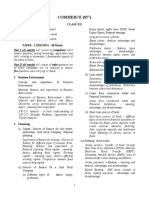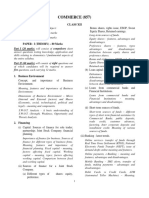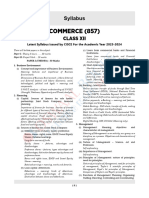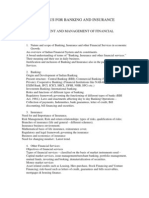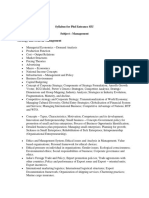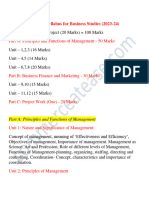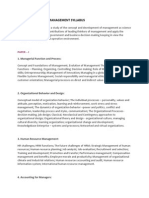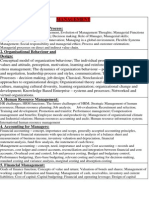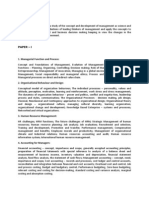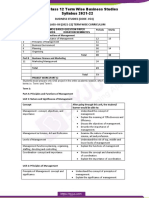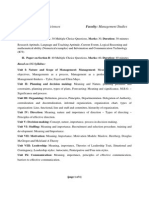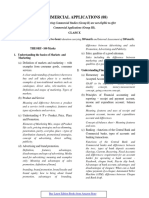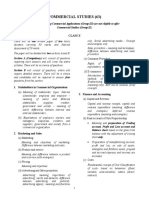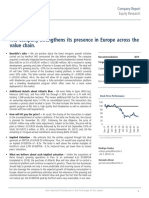0% found this document useful (0 votes)
120 views5 pagesISC Commerce Syllabus
This document provides an overview of the syllabus for Commerce Class XII. It outlines the following key points:
1) There will be two papers - Paper I for theory (3 hours, 80 marks) and Paper II for project work (20 marks).
2) Paper I covers topics like business environment, financing, management, and marketing. It discusses various sources of business financing like shares, debentures, loans, and short-term sources of funds. It also explains the concepts, principles, nature, functions, and importance of management.
3) The functions of management like planning, organizing, staffing, directing, controlling and coordinating are explained in detail highlighting their meaning and importance.
Uploaded by
Panda KathavarayanCopyright
© © All Rights Reserved
We take content rights seriously. If you suspect this is your content, claim it here.
Available Formats
Download as PDF, TXT or read online on Scribd
0% found this document useful (0 votes)
120 views5 pagesISC Commerce Syllabus
This document provides an overview of the syllabus for Commerce Class XII. It outlines the following key points:
1) There will be two papers - Paper I for theory (3 hours, 80 marks) and Paper II for project work (20 marks).
2) Paper I covers topics like business environment, financing, management, and marketing. It discusses various sources of business financing like shares, debentures, loans, and short-term sources of funds. It also explains the concepts, principles, nature, functions, and importance of management.
3) The functions of management like planning, organizing, staffing, directing, controlling and coordinating are explained in detail highlighting their meaning and importance.
Uploaded by
Panda KathavarayanCopyright
© © All Rights Reserved
We take content rights seriously. If you suspect this is your content, claim it here.
Available Formats
Download as PDF, TXT or read online on Scribd
/ 5
